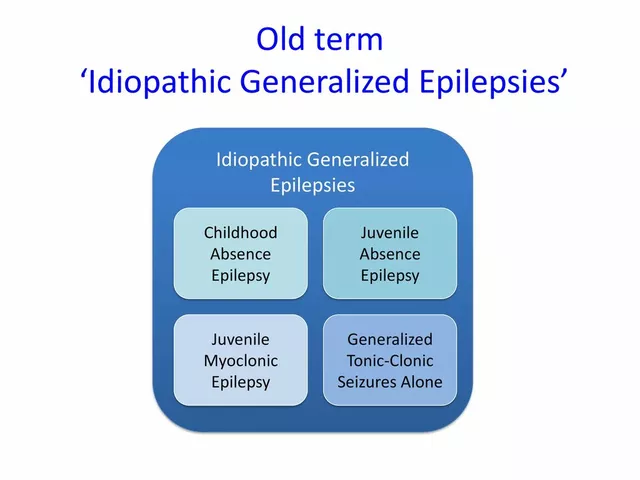PRR Signal Detection Calculator
Calculate Drug Safety Signals
Compute the Proportional Reporting Ratio (PRR) for drug adverse event pairs. The PRR helps identify potential safety signals by comparing the observed frequency of a drug-event combination to what would be expected.
Signal Detection Results
Getting reliable drug safety data used to mean downloading huge XML files, cleaning them, and praying you didn’t miss a single adverse event. Today you can pull the same information with a single HTTP request, thanks to the OpenFDA API and its back‑end FAERS feed. This guide walks you through everything you need to start pulling side‑effect reports, building basic signal queries, and avoiding the most common pitfalls.
TL;DR - What You’ll Walk Away With
- How to register for an OpenFDA API key and set it up in Python, R, or curl.
- The exact endpoint URL for adverse‑event (FAERS) data and the key query parameters.
- Step‑by‑step example queries: single drug, drug‑drug interaction, and serious outcome filter.
- Best‑practice checklist for pagination, rate‑limit handling, and data‑quality warnings.
- When to fall back to the raw FAERS download or a commercial pharmacovigilance platform.
What Is OpenFDA and How Does It Relate to FAERS?
OpenFDA is a public‑access API launched by the U.S. Food and Drug Administration that wraps several FDA datasets, including the FDA Adverse Event Reporting System (FAERS). FAERS itself is the FDA’s repository of voluntary and mandatory drug‑event reports submitted by healthcare professionals, patients, and manufacturers. Historically, researchers downloaded quarterly XML dumps, but OpenFDA streams a continuously updated, Elasticsearch‑backed view of that same data, making it much easier to query in real time.
Getting Your API Key Ready
Access without a key is limited to 1,000 calls per day - enough for quick tests but not for production. Register at open.fda.gov/apis/authentication/ and you’ll receive a long alphanumeric string. Store it in an environment variable (OPENFDA_API_KEY) or a secure key‑ring; most client libraries pull it automatically.
Example in a Linux shell:
export OPENFDA_API_KEY=your_key_hereIn Python is a high‑level programming language frequently used for data science and API consumption, you can set the header like this:
import os, requests
headers = {"Authorization": f"Bearer {os.getenv('OPENFDA_API_KEY')}"}
response = requests.get(url, headers=headers)The same concept applies to R is a statistical language with packages for RESTful calls using httr::GET().
Endpoint Overview - Pulling FAERS Events
The drug adverse‑event endpoint lives at:
https://api.fda.gov/drug/event.jsonKey query parameters include:
search- Elasticsearch‑style query string (e.g.,patient.drug.openfda.generic_name:"ibuprofen").limit- Max records per call (default 1, max 1000).skip- Offset for pagination.sort- Order results, useful for date‑based pulls.
Building a Basic Drug Query
Let’s retrieve the first 10 reports for acetaminophen:
https://api.fda.gov/drug/event.json?search=patient.drug.openfda.generic_name:%22acetaminophen%22&limit=10The JSON response includes fields such as patient.drug.openfda.brand_name, patient.reaction.reactionmeddrapt (MedDRA terms), and serious (1 = serious outcome).
Understanding MedDRA Coding
MedDRA is the Medical Dictionary for Regulatory Activities, a standardized terminology for adverse event reporting used worldwide. Every reaction in the FAERS payload is mapped to a MedDRA Preferred Term (PT). Knowing the PTs lets you group similar events-e.g., “hepatic failure” and “liver injury” can be aggregated under the same safety signal.
Complex Queries - Combining Drugs and Outcomes
Suppose you want events where both warfarin and aspirin appear and the outcome was fatal. The query string combines two drug clauses with AND and a seriousness filter:
search=patient.drug.openfda.generic_name:%22warfarin%22+AND+patient.drug.openfda.generic_name:%22aspirin%22+AND+serious:1+AND+outcome:1Wrap it in the full URL and set limit=100 to fetch a batch.
Handling Pagination and Rate Limits
OpenFDA caps unauthenticated callers at 1,000 requests per day and 240 requests per minute for keyed users. A typical pull of all events for a popular drug (often > 100 k records) therefore requires pagination:
- Start with
skip=0andlimit=1000. - After each call, increment
skipby the number of records received. - Pause for at least 250 ms between calls when using a key, longer if you hit the
429 Too Many Requestsresponse.
Most client libraries already expose a next link in the JSON payload; follow it until you receive an empty results array.
Signal Detection Basics
Signal detection means spotting a drug‑event pair that occurs more often than expected. The simplest approach uses a proportional reporting ratio (PRR):
PRR = (A / (A+B)) ÷ (C / (C+D))
- A = reports with drug + event.
- B = reports with drug + other events.
- C = reports with other drugs + event.
- D = reports with other drugs + other events.
You can compute these counts directly from the API by issuing four separate count queries (use count=1 to get only the meta.results.total field). Once you have the PRR, apply a threshold (e.g., PRR > 2 and at least 3 co‑reports) to flag a potential signal.
Example: PRR for Metformin‑Lactic Acidosis
# 1. Drug + event
A = GET https://api.fda.gov/drug/event.json?search=patient.drug.openfda.generic_name:%22metformin%22+AND+patient.reaction.reactionmeddrapt:%22lactic%20acidosis%22&count=1
# 2. Drug + other events
B = GET https://api.fda.gov/drug/event.json?search=patient.drug.openfda.generic_name:%22metformin%22+AND+_-patient.reaction.reactionmeddrapt:%22lactic%20acidosis%22&count=1
# 3. Other drugs + event
C = GET https://api.fda.gov/drug/event.json?search=-patient.drug.openfda.generic_name:%22metformin%22+AND+patient.reaction.reactionmeddrapt:%22lactic%20acidosis%22&count=1
# 4. Other drugs + other events
D = GET https://api.fda.gov/drug/event.json?search=-patient.drug.openfda.generic_name:%22metformin%22+AND+_-patient.reaction.reactionmeddrapt:%22lactic%20acidosis%22&count=1
Plug the totals into the PRR formula and you’ll see whether the signal exceeds the standard threshold.
Limitations You Must Keep in Mind
- Timeliness: OpenFDA updates the FAERS feed quarterly, so you may be looking at data up to three months old.
- De‑identification: Patient identifiers are stripped, which limits cohort analyses that need age or gender breakdowns beyond the aggregated fields provided.
- Rate‑limit throttling: Exceeding limits triggers HTTP 429; always code exponential back‑off.
- No built‑in signal algorithms: The API only returns raw reports. You’ll need to implement PRR, EBGM, or other methods yourself.
- Disclaimer: The FDA stresses the data are for research, not clinical decision‑making.
When to Use Direct FAERS Downloads Instead
If you need the full, unfiltered quarterly XML dump-for example, to run a custom natural‑language processing pipeline on every free‑text narrative-download the raw files from fis.fda.gov. The download size for a single quarter can exceed 2 GB, so you’ll need decent storage and processing power. Direct access also removes the API’s rate‑limit ceiling, but you lose the convenience of instant query filtering.
Comparison Table - OpenFDA vs Direct FAERS vs Commercial Platforms
| Feature | OpenFDA (FAERS API) | Direct FAERS XML | Commercial (e.g., ARTEMIS) |
|---|---|---|---|
| Cost | Free (API key optional) | Free (download fees none) | ~$150,000 / year license |
| Update frequency | Quarterly with ~3‑month lag | Quarterly, immediate after release | Real‑time ingest |
| Query flexibility | Elasticsearch DSL via URL | Requires local parsing | GUI + advanced signal modules |
| Rate limits | 1,000 req/day (no key) / 240 req/min (key) | None (local processing) | High‑throughput enterprise tier |
| Signal detection tools | None (user‑built) | None (user‑built) | Built‑in disproportionality, Bayesian methods |
Best‑Practice Checklist Before You Launch
- Register and securely store an API key.
- Test a simple query to confirm connectivity.
- Plan pagination: decide on
limitsize and implementskiploops. - Include exponential back‑off for HTTP 429 responses.
- Validate MedDRA terms against the official dictionary if you plan to aggregate.
- Document your PRR thresholds and justification.
- Always add the FDA disclaimer when publishing results.

Real‑World Examples of OpenFDA in Action
Several open‑source projects showcase the API’s power. MedWatcher aggregates recent FAERS events and sends email alerts for high‑PRR drug‑event pairs. Academic researchers at the University of Washington used OpenFDA to screen for cardiac‑related adverse events across all antihypertensives, publishing a paper that cited over 200 OpenFDA‑derived reports. Finally, a small health‑tech startup built a mobile app that lets patients look up the most common side effects for any prescription, pulling the data live from the API to keep the UI fresh.
Next Steps - From Prototype to Production
Once your proof‑of‑concept works, consider containerizing the data‑pull script (Docker works well with the provided bootstrap.sh from the GitHub repo). Schedule nightly runs with a cloud function or AWS Lambda, store the results in a secure S3 bucket, and feed them into a downstream analytics pipeline (e.g., Pandas + scikit‑learn for clustering). Keep an eye on the OpenFDA GitHub issue tracker; the team frequently adds new endpoints or tweaks rate‑limit policies.
Do I need an API key to use OpenFDA?
No, you can make up to 1,000 requests per day without a key, but a key raises the per‑minute limit to 240 and removes the daily cap.
How recent is the data returned by the API?
OpenFDA updates its FAERS mirror quarterly, so the newest reports may be up to three months old.
Can I download the entire FAERS dataset via the API?
Not in one call. You must paginate through the limit and skip parameters, respecting rate limits. For a full offline copy, download the XML files directly from the FDA website.
What format are adverse‑event terms stored in?
Each reaction uses a MedDRA Preferred Term (PT) code, which you’ll see as a readable string under patient.reaction.reactionmeddrapt.
Is OpenFDA suitable for clinical decision support?
No. The FDA explicitly states the data are for research and public‑information purposes only. Always consult a healthcare professional before acting on any signal.






ahmed ali
October 26, 2025 at 19:38
Alright, let me lay it out piece by piece so even the most clueless can finally get a grip on why most people still treat the OpenFDA API like a toy rather than a serious research tool. First off, the documentation is a mess of copy‑paste snippets that assume you already know how Elasticsearch queries work, which is a bold assumption for anyone not spending their days tweaking Lucene syntax. Second, the rate‑limit throttling is not just a polite nudge; it’s a hard stop that will blow up your pipeline if you don’t implement exponential back‑off, something the guide only mentions in passing. Third, the quarterly update lag means you’re constantly chasing a three‑month old shadow of reality – perfect for academic papers, terrible for real‑time pharmacovigilance. Fourth, the JSON payloads are riddled with nested arrays where a flat CSV would have saved you hours of parsing pain. Fifth, the key‑value pairs for drug names are case‑sensitive, so a typo like "ibuprofEn" silently returns zero results, and you’ll waste a day wondering why your query failed. Sixth, pagination with skip/limit is linear and becomes a nightmare when you try to retrieve more than a few hundred thousand records; you’ll end up writing your own cursor logic. Seventh, the API does not provide any built‑in disproportionality metrics – you have to code PRR, EBGM, or any other signal detection from scratch, which defeats the whole “ease of use” promise. Eighth, the MedDRA term dictionary isn’t embedded, so you’ll need a separate lookup table to map PTs, adding another dependency to your stack. Ninth, the API key management is insecure if you store it in plain‑text environment variables, a flaw that many beginners overlook. Tenth, the error messages are generic 429 or 500 responses without a helpful body, forcing you to scour the GitHub issues for clues. Eleventh, the caching layer is opaque – you never know if you’re getting fresh data or a stale snapshot. Twelfth, the examples in Python, R, and curl are copied verbatim across languages without respecting idiomatic differences, which leads to subtle bugs. Thirteenth, the pagination delay recommended (250 ms) is arbitrary and may not be sufficient under heavy load, causing intermittent 429 spikes. Fourteenth, there’s no official SDK for JavaScript, yet many front‑end dashboards try to call the API directly, resulting in CORS headaches. Fifteenth, the “free” nature of the service hides the cost of bandwidth and storage on your side, which can balloon when you dump millions of records. Finally, the whole ecosystem feels like a half‑baked prototype that the FDA dropped on the internet to look productive, and anyone who treats it as a production‑grade data source is either overly optimistic or simply unaware of these pitfalls.